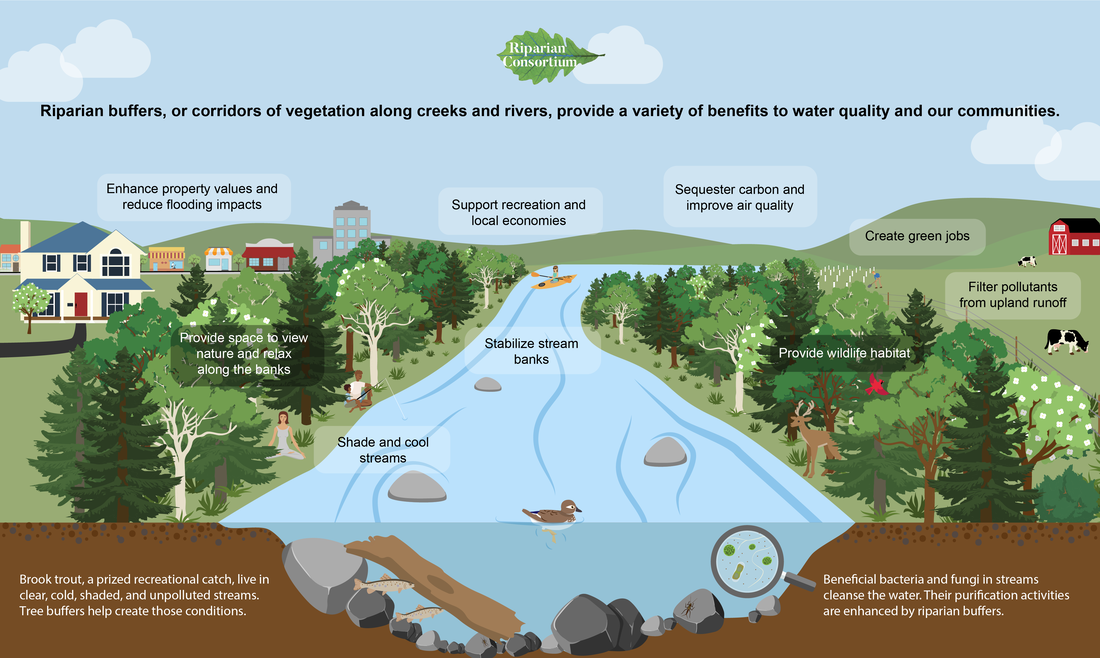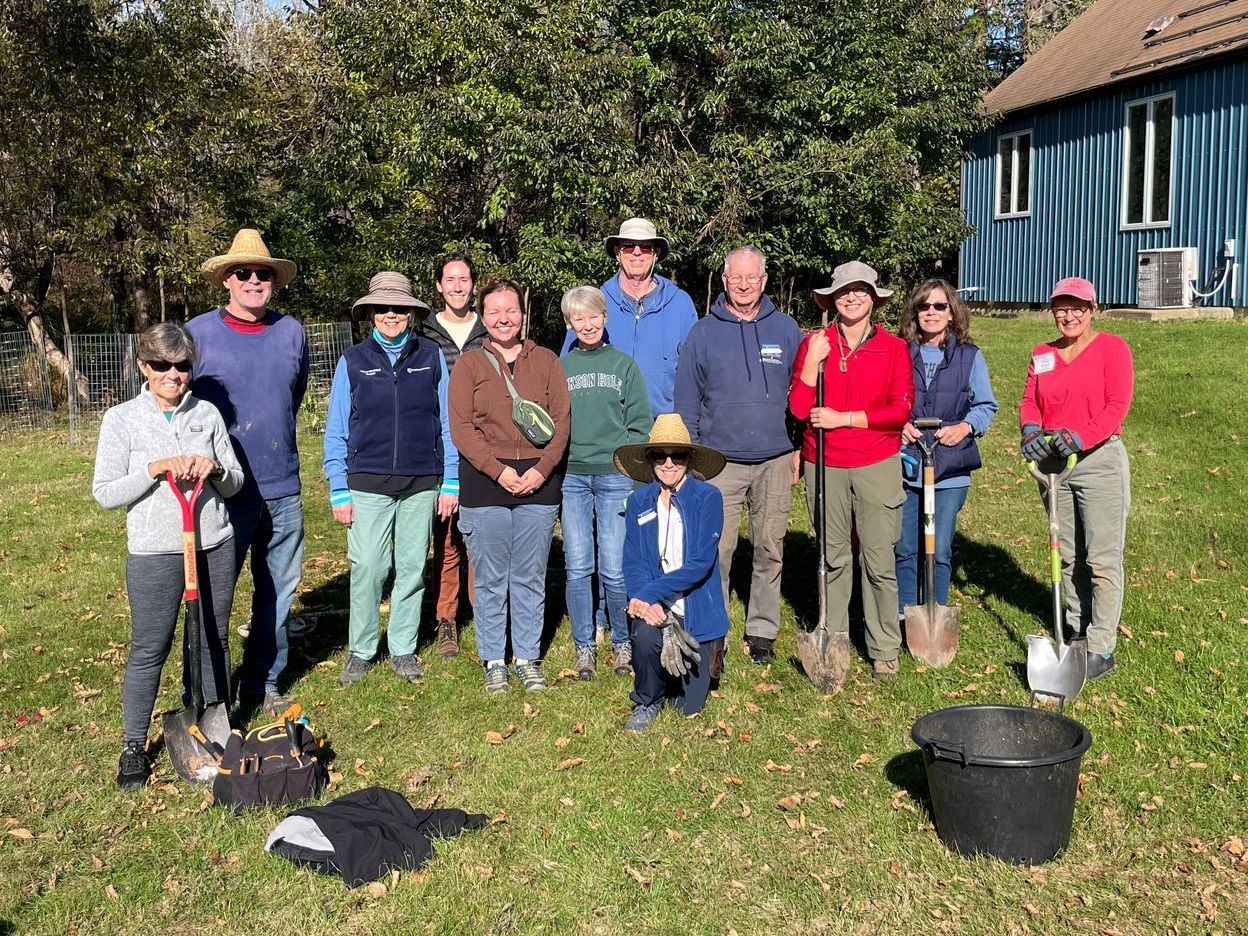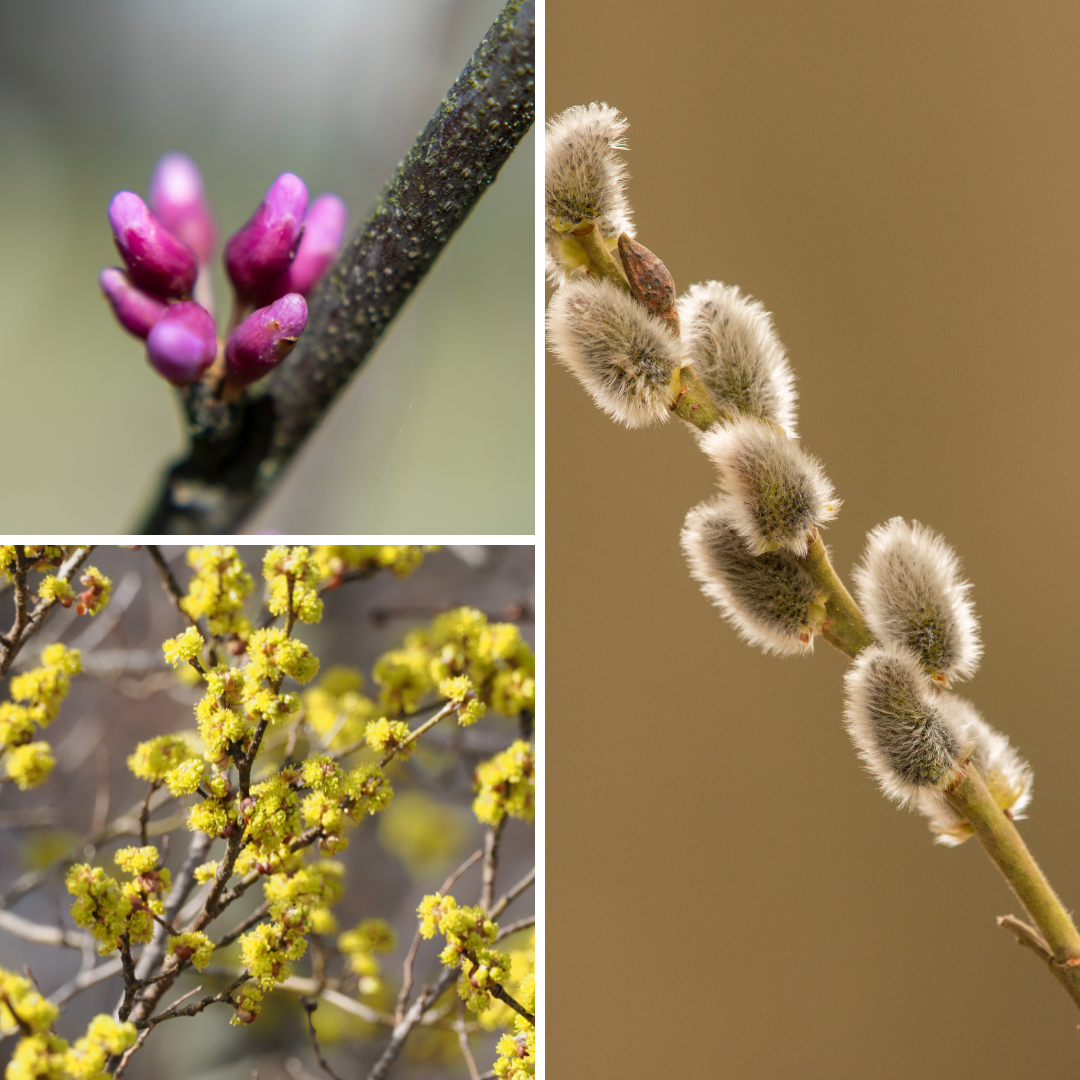What is a riparian buffer and why are we restoring it?
PVNC’s Riparian Buffer Restoration
Volunteers have been working hard over the last several weeks to restore and extend an important section of Lake Galena’s riparian buffers. Sometimes called forested or stream buffers, these vegetated sections are defined as an area adjacent to a body of water which contains a combination of trees, shrubs, and other perennials and is managed primarily to provide conservation benefits. The benefits of riparian buffers are numerous, but they can be broken down into four categories, outlined below.

Flood Control
Flooding has become a serious issue in our community as we see more frequent heavy rain events and continue to replace forested areas with large swaths of mowed lawns and impervious surfaces. A forest can absorb about 14 inches of water per hour, while a mowed lawn may only be able to handle about 2 inches. Any excess water that is not absorbed will sheet off and flood roadways, homes, and waterways. Alternatively, the deep roots of trees and shrubs in riparian buffers can mitigate some of this damage by absorbing rainfall and slowing runoff which reduces peak flows and decreases downstream flooding.
Streambank Stabilization
The shallow roots of traditional lawns also make them far less effective than deep-rooted native plants at holding soil in place. This is particularly problematic along bodies of water, where even minor flooding can cause significant erosion of the streambank if it is populated by shallow roots. By planting trees and shrubs with deep roots along waterways we can decrease soil loss and prevent bank collapse, protecting water quality and important habitats downstream.
Water Quality
Erosion of streambanks leads to higher quantities of sediment in the water, which you may be surprised to learn is a major pollutant. Not only do riparian buffers minimize sediment by holding soil in place on site, they also trap sediment that has washed to the streambank from elsewhere – offering one last filter to prevent a larger pollution event. Beyond trapping sediment, woody plants remove nutrients (nitrates and phosphates) and contaminates (such as metals, pesticides, solvents, oils, and hydrocarbons) from soil and water. Studies have shown reductions of around 80% of chemical pollutants after runoff passed through a forest buffer! These water quality issues are particularly important here at Peace Valley Nature Center, because Lake Galena is our community’s drinking water.
Habitat Preservation
These pollutants not only make filtration for drinking water more costly, they also wreak havoc on our aquatic ecosystems by causing harmful algae blooms and decreasing survival rates of the many species that rely on Lake Galena. Riparian buffers not only protect aquatic life by filtering pollutants, they also provide terrestrial habitat for mammals, insects, birds, and fungi – just to name a few inhabitants. Peace Valley Park is a vibrant an diverse natural space, and water pollution is a major threat for both wildlife and human life alike in this interconnected ecosystem. Riparian buffers are just one way that PVNC, with the help of many talented and generous volunteers, can contribute to the lasting health of our community.
Resources for reforesting your land:
https://www.dcnr.pa.gov/Conservation/Water/LawnConversion/Pages/default.aspx
https://extension.psu.edu/lawn-alternatives
https://extension.psu.edu/pennsylvania-native-plants-for-the-perennial-garden
Sources used for this article:
https://www.fs.usda.gov/nac/practices/riparian-forest-buffers.php
https://www.fs.usda.gov/nac/assets/documents/agroforestrynotes/an03rfb02.pdf
https://extension.psu.edu/riparian-buffers-for-field-crops-hay-and-pastures#:~:text=That%20being%20said%2C%20to%20meet,order%20to%20achieve%20various%20benefits.
https://www.fs.usda.gov/nac/buffers/guidelines/5_protection/9.html#:~:text=During%20flood%20events%2C%20riparian%20buffers,of%20the%20floodplain%20of%20concern.
https://ecosystems.psu.edu/research/centers/private-forests/news/for-water-quality-creating-woods-instead-of-lawns#:~:text=Your%20lawn%2C%20because%20of%20grass,should%20move%20into%20the%20soil.
https://extension.psu.edu/the-role-of-trees-and-forests-in-healthy-watersheds





